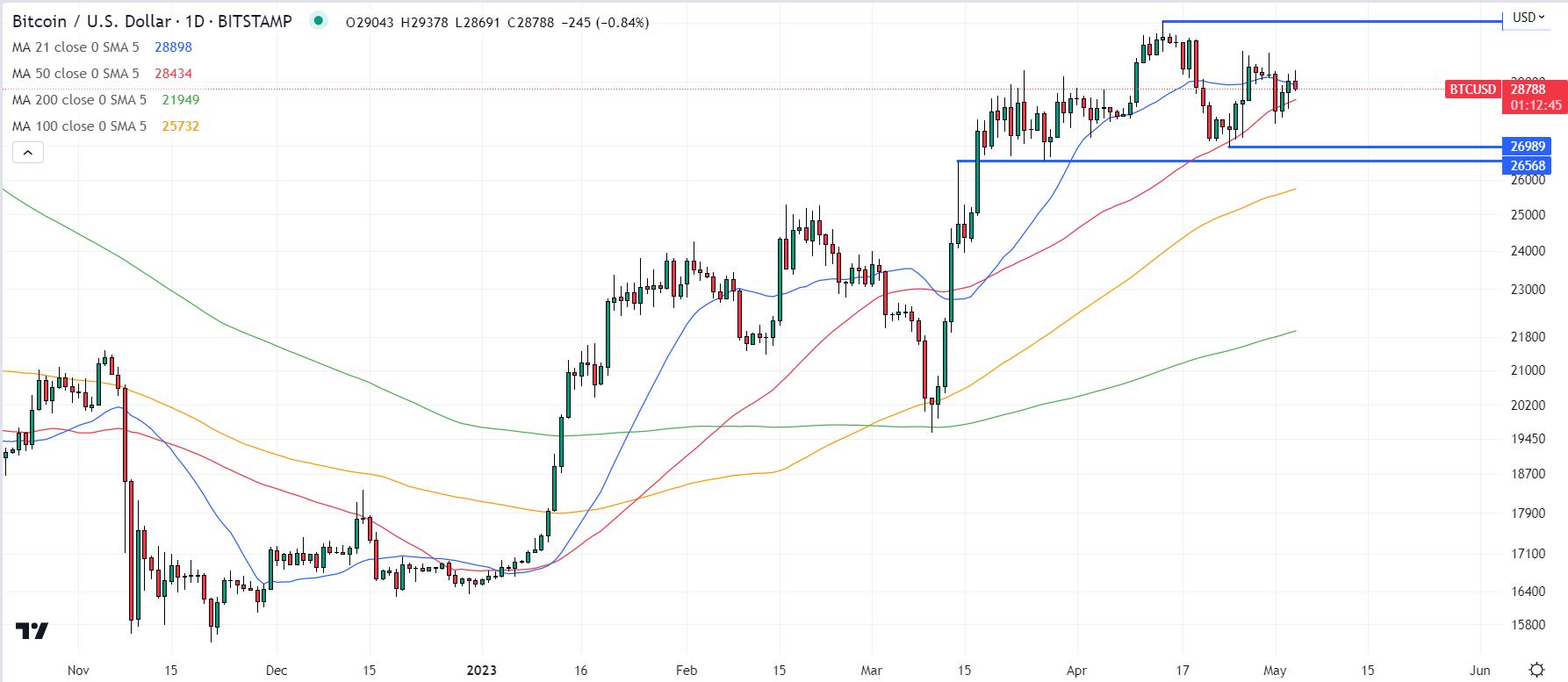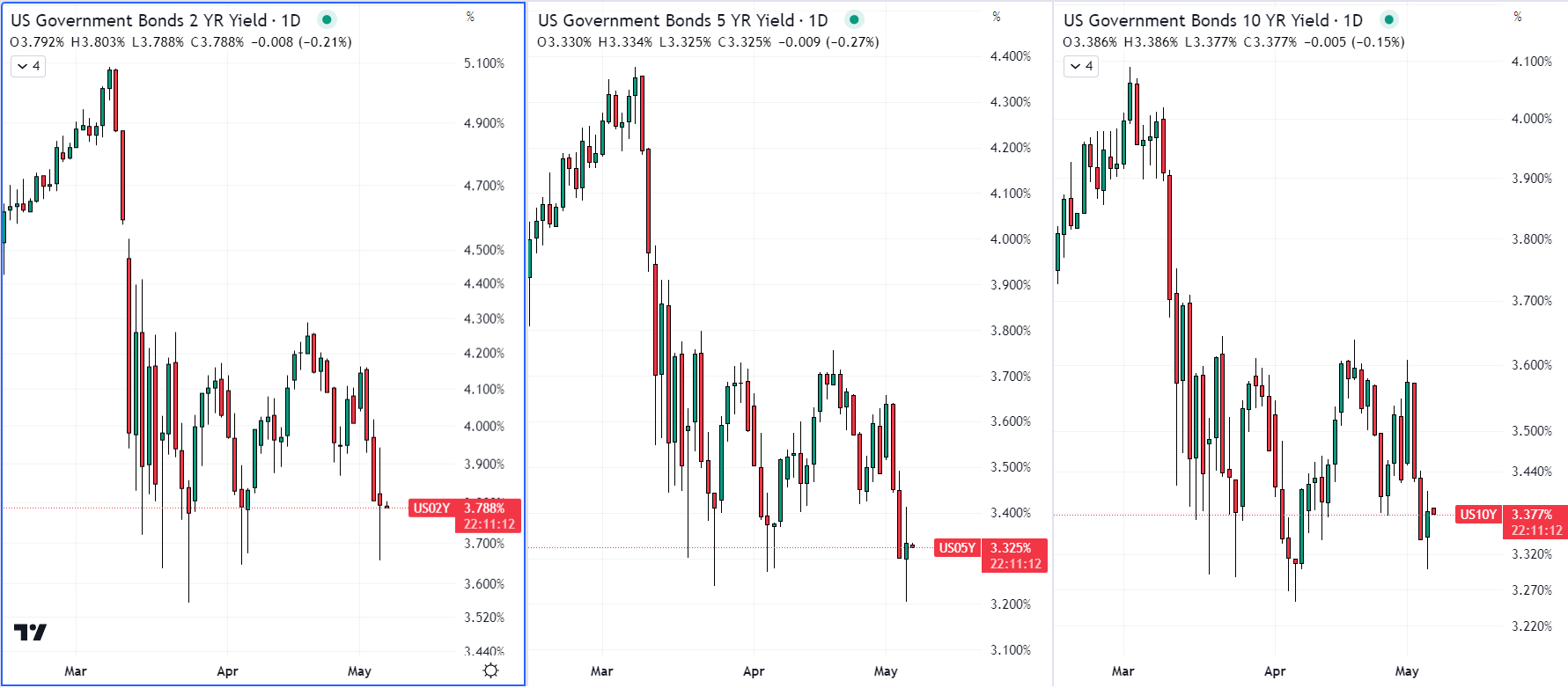Bitcoin consolidates ahead of key US jobs data, but falling returns could signal incoming BTC price pump


Bitcoin (BTC) continues to consolidate within familiar ranges near $29,000 ahead of the release of key US jobs data on Friday.
The data, which is expected to show that the pace of US hiring and wage growth remains robust and that the unemployment rate remains near historically low levels, comes on the heels of a 25bps interest rate hike by the US Federal Reserve earlier in the day. week.
The US central bank lifted its Federal Funds target range to 5.0-5.25% as widely expected by market participants, marking a 500bps tightening in its last 10 meetings.
The Fed has spent the past year tightening economic conditions to bring a rise in US inflationary pressures that began in 2021 under control.
Bitcoin did not see much volatility in the wake of the meeting and is staying well within the $27,000-$31,000ish range that has been in play since March.

Recent Bitcoin price action suggests that the market is in a state of indecision about where Bitcoin is headed next.
Is a retracement above $30,000 on the cards, or a retracement of support in the $25,000 area?
Well, one of the world’s most important asset classes can give traders a clue – that is, the US financial market.
With yields about to break down, could this signal an incoming Bitcoin (BTC) price pump?
While upcoming US jobs data will likely show that the US labor market remained in good health in March, there are already cracks.
The latest US JOLTs survey released earlier this week showed US job vacancies falling to fresh two-year lows, with weaker demand for labor a leading indicator of potential job losses.
And expectations of a weaker US labor market later this year add to the reasons why this week’s hike from the Fed was likely to be the last in this tightening cycle.
Other sectors of the US economy (such as manufacturing, which ISM PMI survey data suggest is in decline) are also weakening as the headwinds of a year of aggressive monetary tightening by the Fed begin to bite.
Perhaps more importantly, a significant new headwind to the US economy has come in the form of a worsening banking crisis.
After First Republic became the fourth major U.S. bank to fail in less than two months, dozens of other regional banks are limping, dragging down banking sector stocks.
The banking sector’s problems are expected to result in a significant slowdown in lending, a key driver of growth, significantly increasing the risk of recession.
All of this means that the Fed will, more likely than not, have to start cutting interest rates later this year to support growth.
As economic risk and the likelihood of a short-term Fed rate cut cycle increase, US Treasury markets have taken notice.
The 2-year yield hit a new one-month low below 3.7% on Thursday, the 5-year yield hit its lowest levels since September last year, near 3.2%, and the 10-year yield threatens a break below key support around 3.3% .

If interest rates continue to fall, which seems likely in the medium term given the worsening banking crisis (and even if Friday’s US jobs data beats expectations), it represents (and also creates) a more favorable macro backdrop for cryptocurrencies like Bitcoin.
In recent history, Bitcoin has performed well during times of easing economic conditions (ie falling yields).
It can also count on another medium-term tailwind in the form of safe demand as investors look to “hard-money” alternatives to fiat currencies – such as gold and Bitcoin – as concerns about financial stability rise.
Assuming the downward trend in US interest rates continues amid banking crisis/increasing recession risk, and assuming this also hits the value of the US dollar (which is also negatively correlated to Bitcoin), the risk is tilted more towards a possible short-term Bitcoin price pump as opposed to to a new bear market.

























